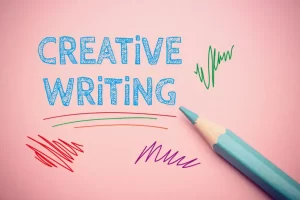Do you know that over 2 million books are published worldwide each year? Standing out in this sea of content can be daunting, but developing your unique writing voice can set you apart. In this guide, we’ll explore how to captivate your audience by embracing authenticity, refining your style, and crafting compelling narratives. Whether you’re a seasoned writer or just starting out, honing your voice can elevate your work and leave a lasting impact. So, let’s dive in and discover how to make your writing stand out from the crowd.

Understanding Your Audience
To develop your unique writing voice, understanding your audience is imperative for effective communication. Before you start writing, take the time to research and analyze who your audience is. Consider their demographics, interests, and knowledge level on the topic. This understanding will shape the tone, language, and examples you use in your writing. For instance, if you’re addressing a professional audience, a formal tone and industry-specific jargon may be appropriate. On the other hand, if your audience is more casual and diverse, a conversational tone and relatable examples would be more effective. By tailoring your writing to suit your audience, you can ensure that your message resonates and engages them effectively. Remember, understanding your audience is the key to captivating and connecting with them through your writing.
Embracing Authenticity
Embracing authenticity in your writing involves aligning your voice with your true self while considering the unique preferences and perspectives of your audience. It’s about expressing your thoughts and ideas in a way that feels genuine to you. Avoid the temptation to mimic others or conform to what you think is expected. Instead, focus on being true to your own experiences, beliefs, and emotions. Your authenticity will resonate with readers and help you stand out in a crowded digital space. Embrace your individuality and don’t be afraid to let your personality shine through in your writing. Remember that being authentic doesn’t mean being perfect; it means being real. Embracing authenticity will not only set your writing apart but also create a deeper connection with your audience.
Refining Your Writing Style
Refine your writing style by experimenting with different sentence structures, word choices, and literary devices to find the most effective ways to convey your message. Vary the length and rhythm of your sentences to create flow and emphasis. Play with different vocabulary to express your ideas in a fresh and engaging manner. Incorporate literary devices such as metaphors, similes, and personification to add depth and vividness to your writing. Pay attention to the tone and voice you want to convey and tailor your style accordingly. Keep refining and honing your writing style, seeking to strike a balance between eloquence and clarity. Remember, the goal is not to impress with complexity, but to effectively communicate your thoughts and emotions. Keep experimenting, and you’ll find a style that is uniquely yours.
Crafting Compelling Narratives
Crafting compelling narratives involves drawing readers into your story through vivid imagery, engaging characters, and a captivating plot. To achieve this, start by creating a strong emotional connection between your characters and the readers. Make your characters relatable by giving them depth and flaws. Develop their personalities, desires, and fears to make them feel real. Use descriptive language to paint a vivid picture of the settings and experiences within your story. Show, don’t tell, to immerse your readers in the world you’ve created. Additionally, build a plot that is full of tension, conflict, and resolution to keep your audience hooked. By weaving these elements together, you can craft a narrative that captivates and resonates with your readers.

